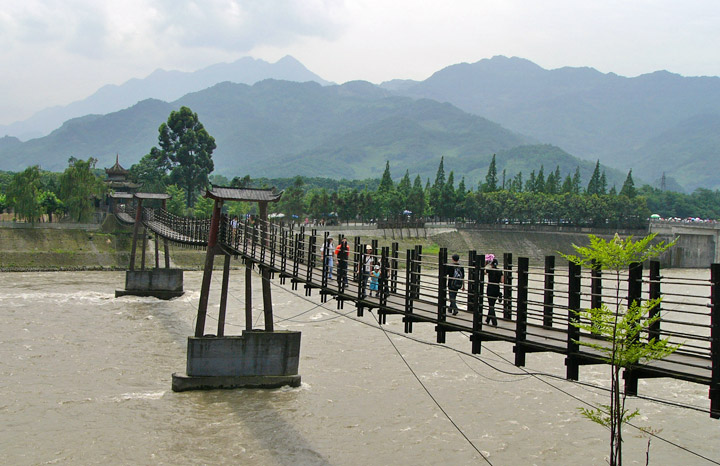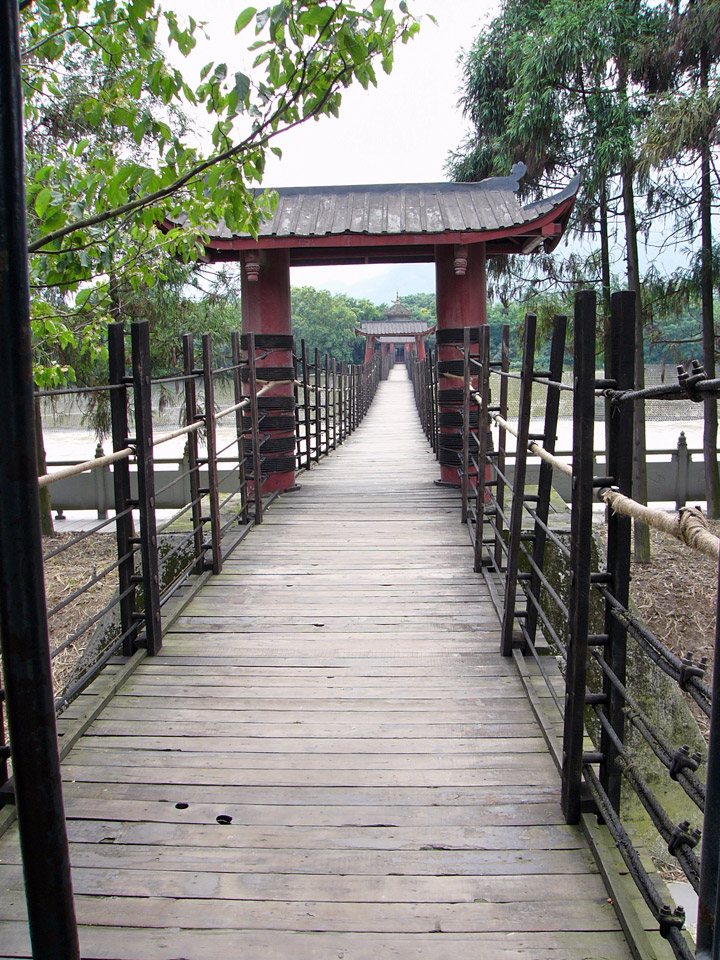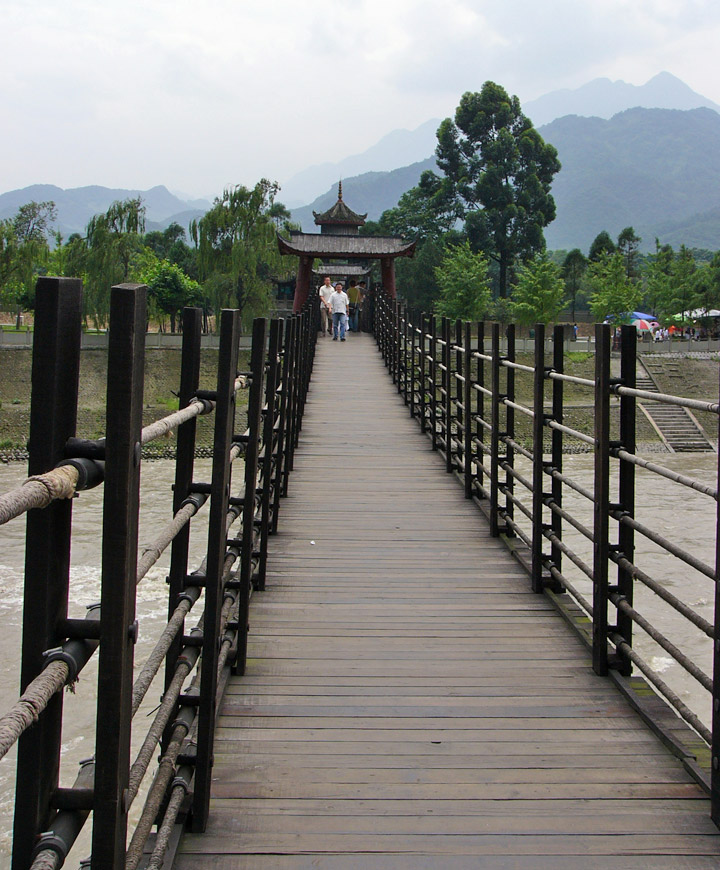

Dujiangyan
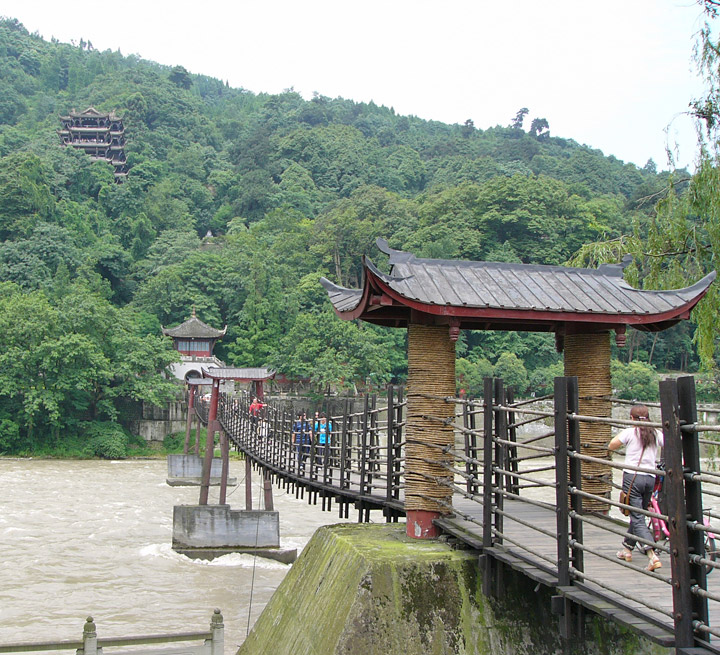
Anlan Suspension Bridge
Dujiangyan Irrigation Project of China
The Dujiangyan Irrigation Project is a long-established water conservation works. It is 56 kilometers (34.8miles) west of Chengdu at Dujiangyan city lying in the middle reach of Minjiang River, which is the longest tributary of Yangtze River.
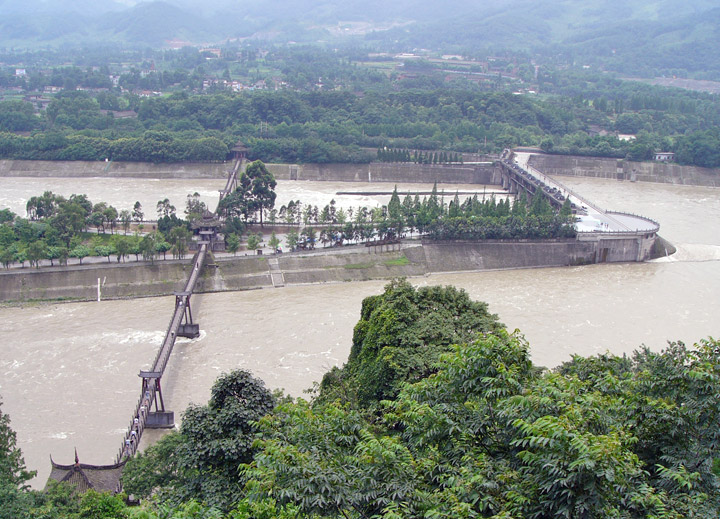
Since ancient times the Minjiang River has surged downward from Mt. Minshan
thrusting itself into the Chengdu Plain. When reaching the flatlands the rivers
speed slowed down abruptly. Thus the watercourse filled up with silt making this
area extremely vulnerable to flooding. The people living on the Chengdu Plain
consequently suffered a great deal from frequent floods.
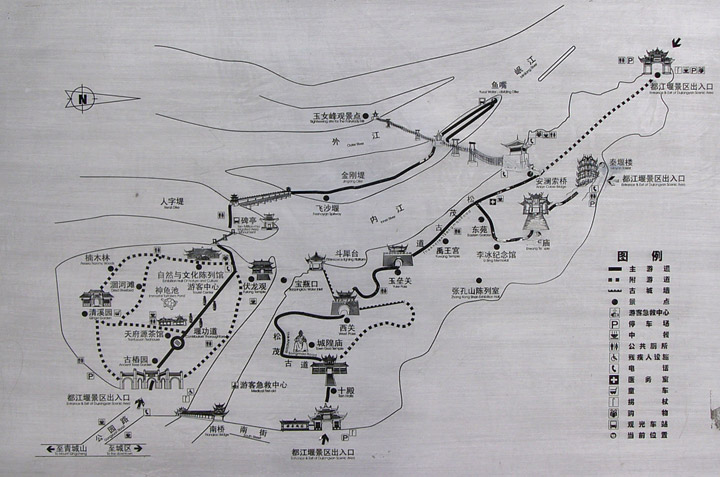
diagram of the project and temple complex
Around BC 250 during the Warring States Period, Libing, a governor of Shu in Qin state (present Sichuan Province) with his son directed the construction of Dujiangyan. The governor gave up the old ways of dam building which was simply try to catch the floodwaters. Instead he employed a new method by channeling and dividing the water to harness the Minjiang River. He accomplished this by separating the project in to two main parts: the headwork and the irrigation system. The project effectively put the flooding waters under control.
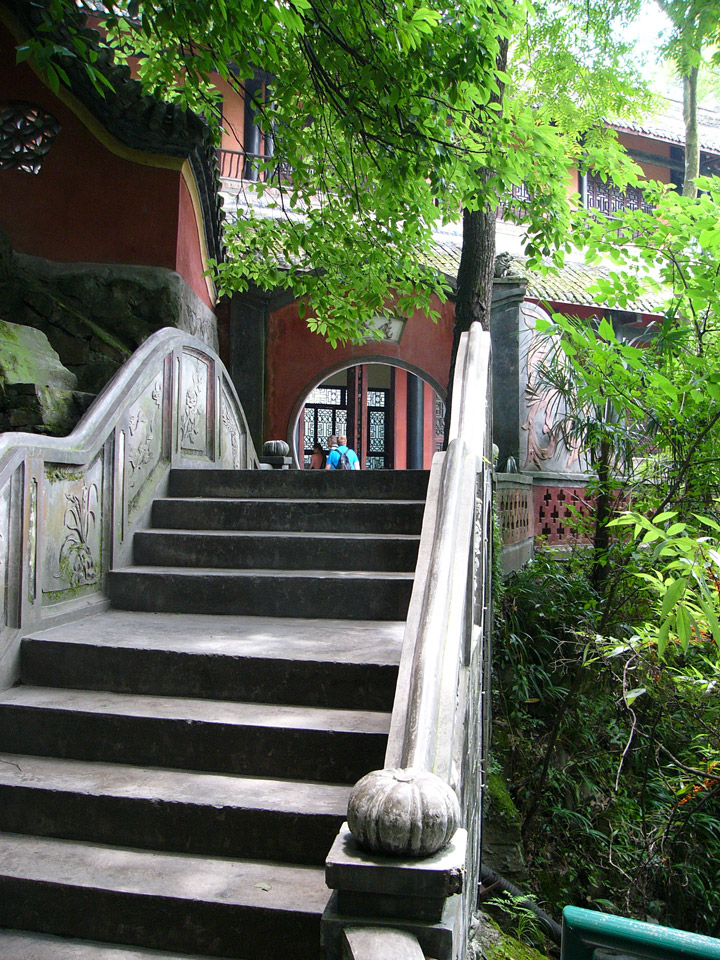
many people view the project from
the top of the hill
then walk down through the temple complex
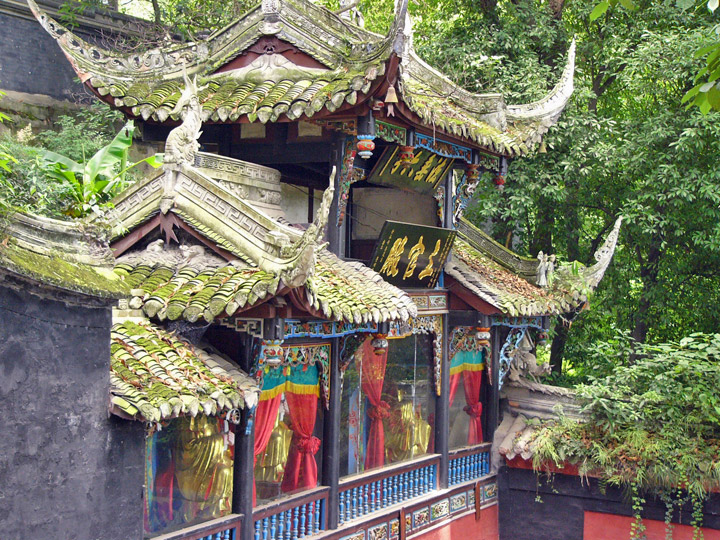
A tablet with the handwriting of Emperor Guangxu described the great
achievements of this project. The proverb telling the means to control of the
water,
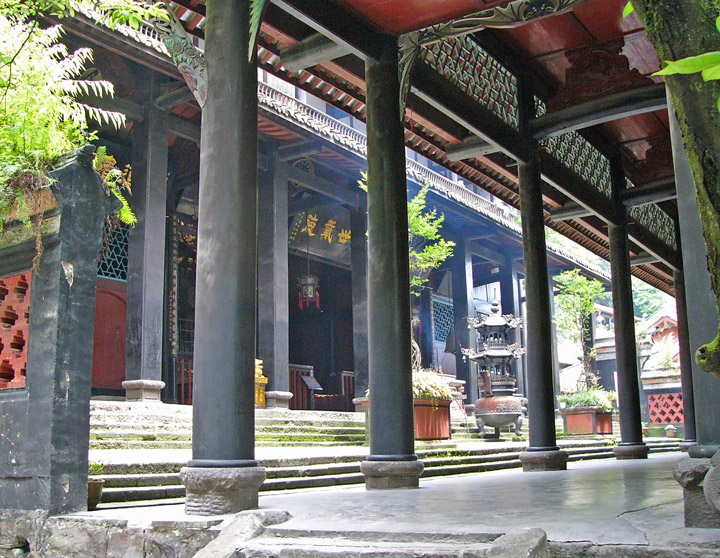
Erwang Temple (Two Kings Temple)
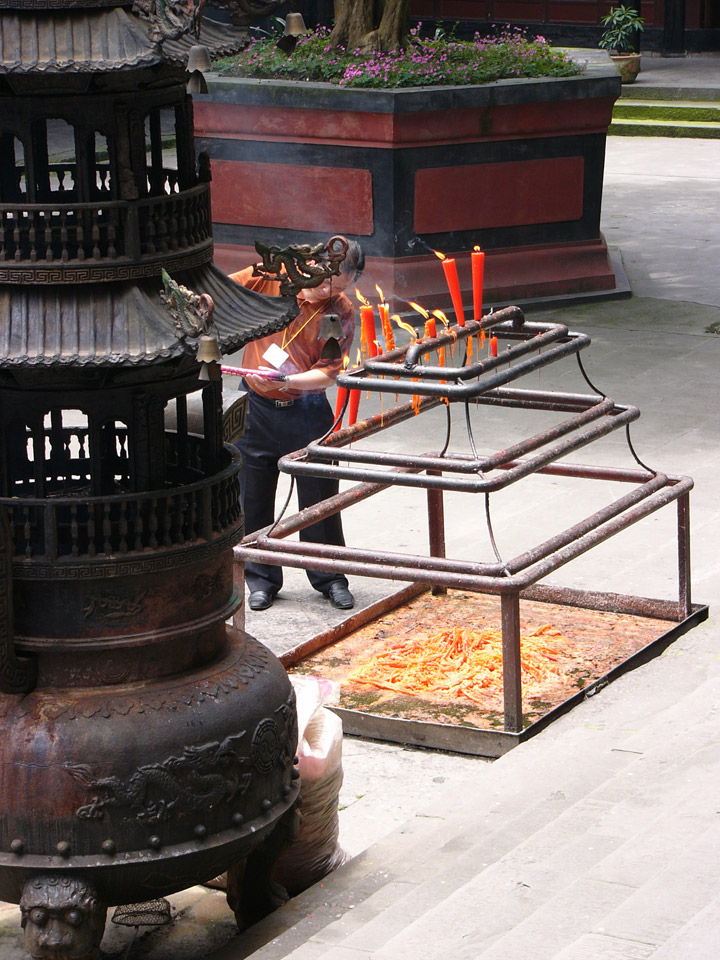
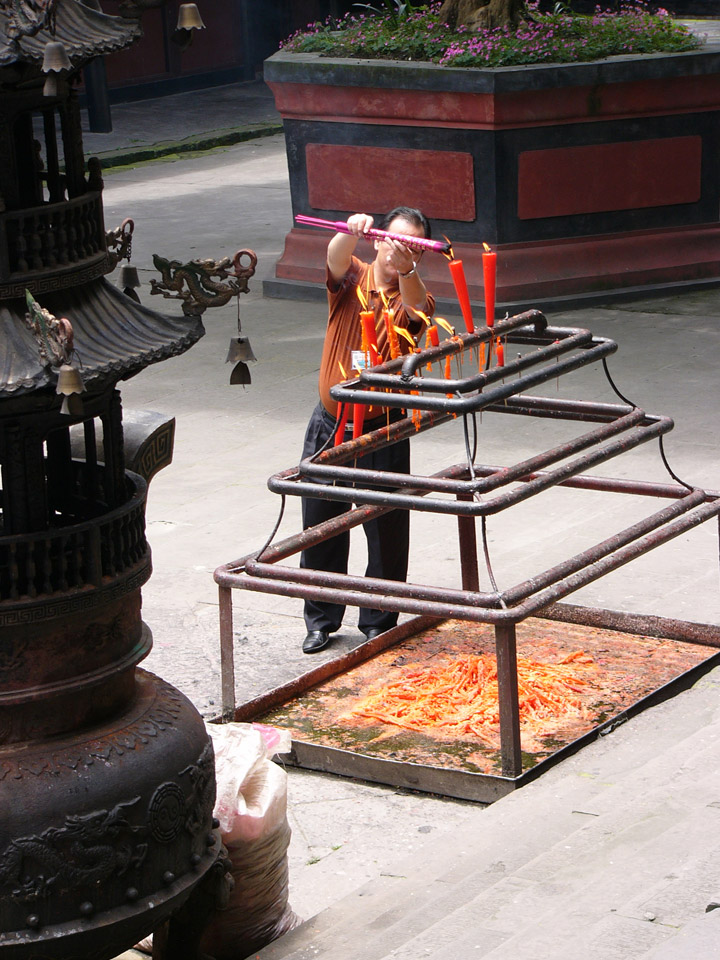
lighting a candle
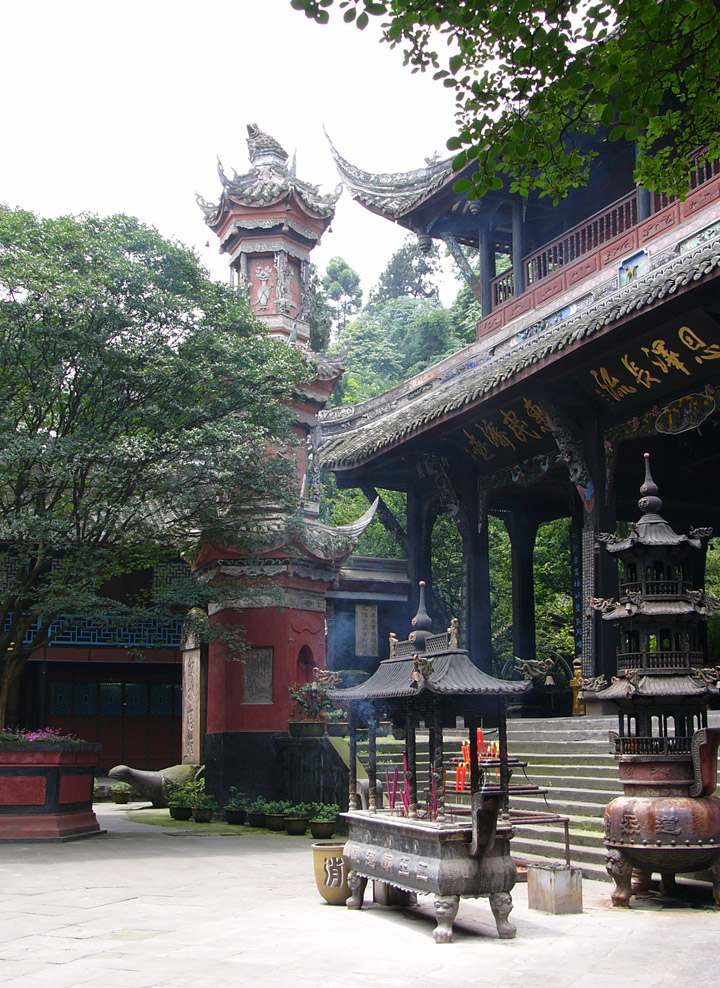
For over two thousand years the whole system has functioned perfectly, serving
as not only as flood prevention but also as an immense source for irrigation as
well as a means to facilitate shipping and wood drifting. It has contributed
greatly to the richness of Chengdu Plain and helps it earn its reputation as
"The Land of Abundance".
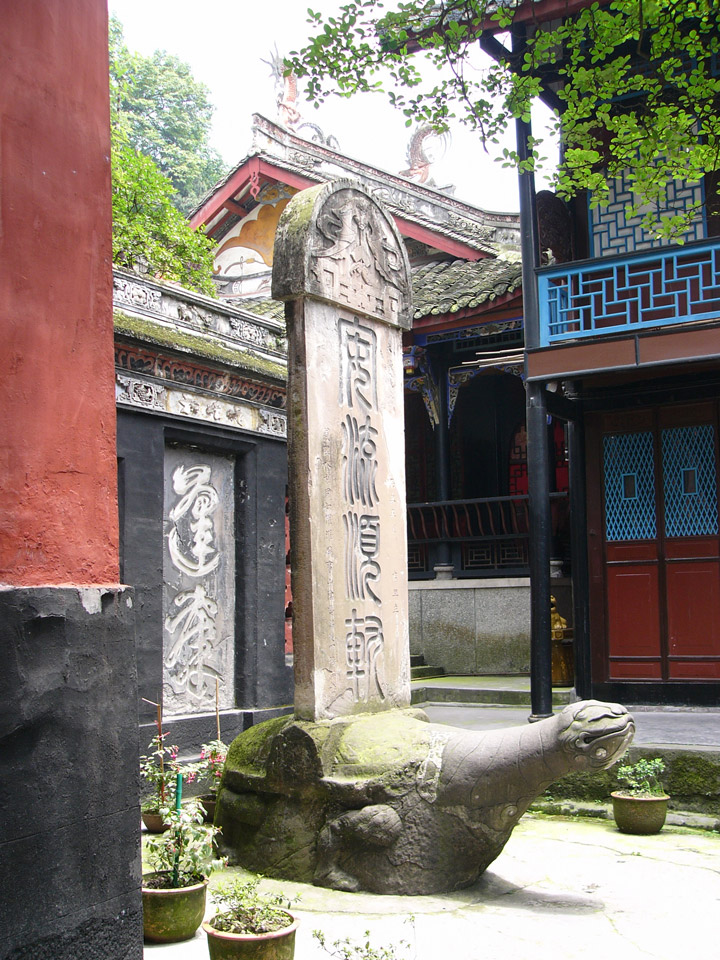
On November 29th, 2000, Dujiangyan was listed on world cultural heritages by
UNESCO.
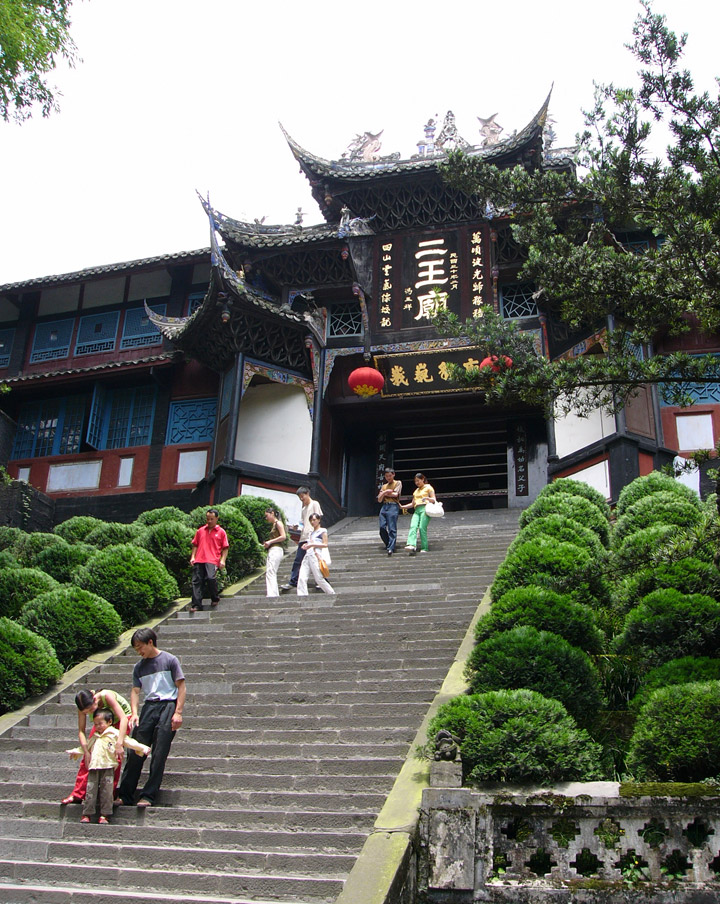
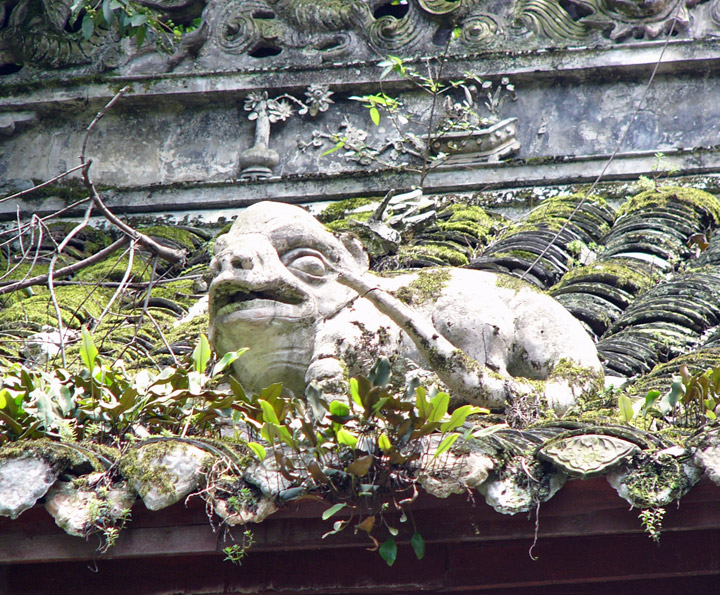
Yuzui: It is a long and narrow dyke built in the center of the Minjiang River,
dividing Minjiang into the inner river and the outer. Uniquely Libing designed
it in a shape of fish mouth, in order to receive least water resistance. In
average, 40 percent of river's runoff goes into the inner river in flood season,
60 percent into the outer, and vice versa in dry season. The inner river diverts
water into Chengdu Plain through Baopingkou. And the outer is the main flow,
which carries off 80 percent of silt.


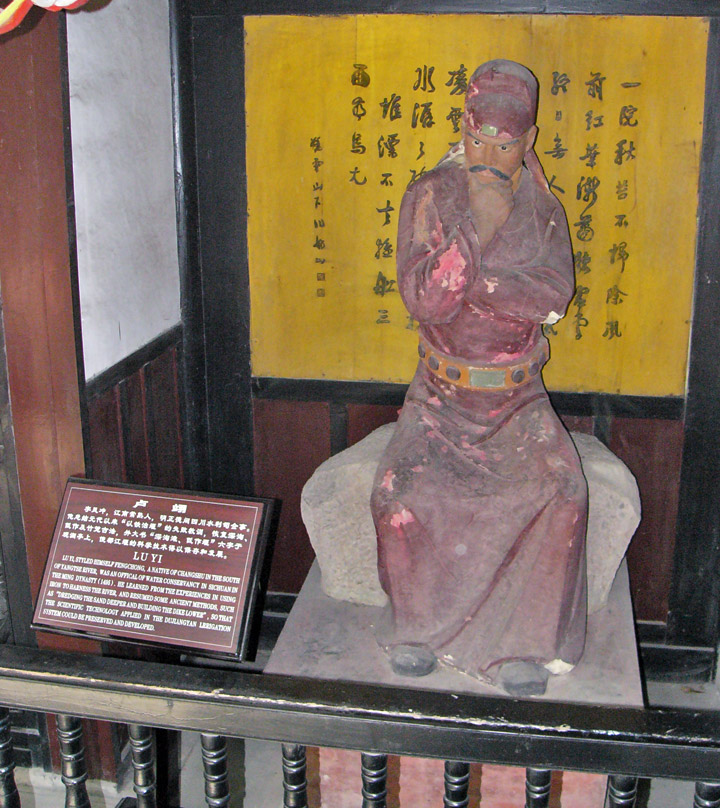
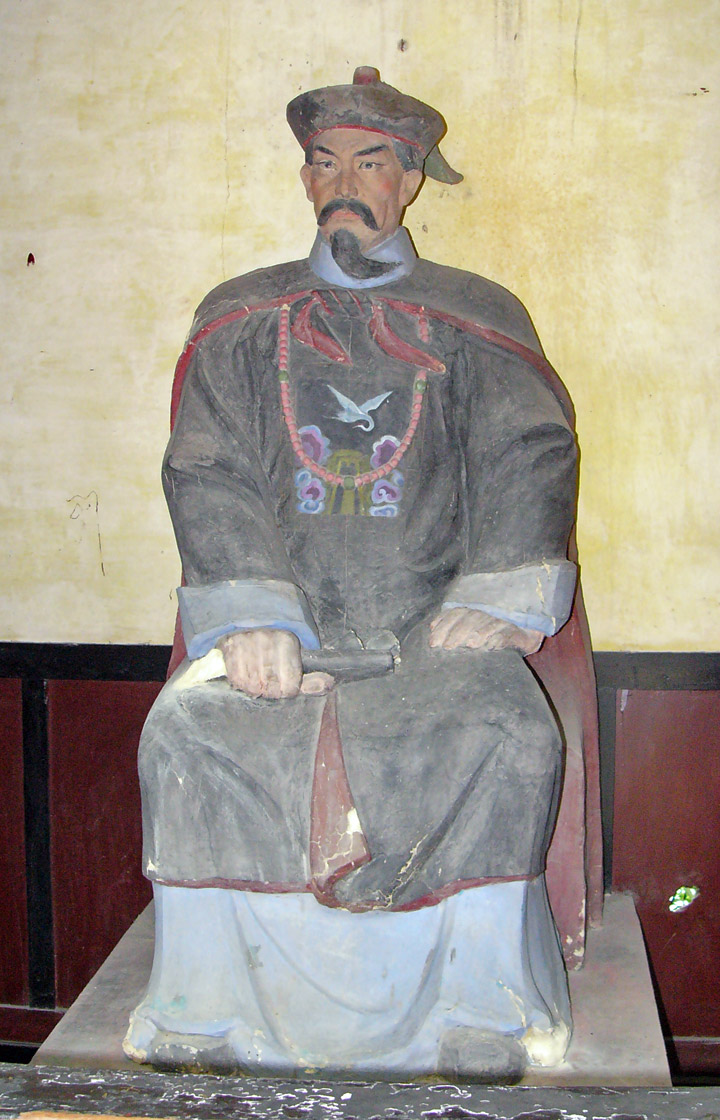

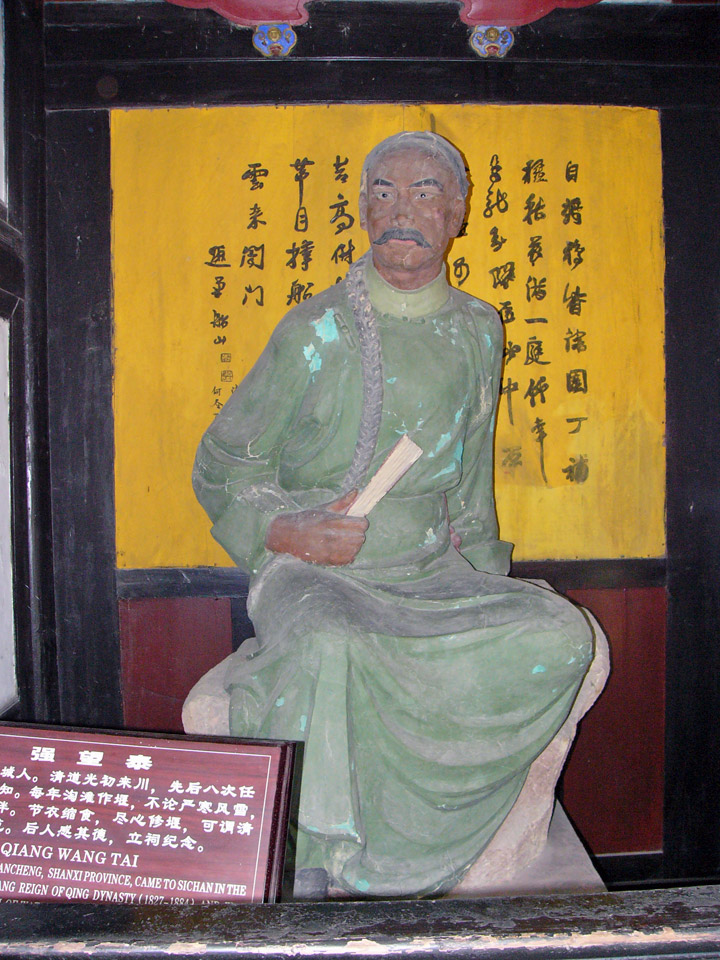
Baopingkou: It is the main diversion gate to draw in water for irrigation in
shape of bottleneck. In construction of irrigation system, Libing had a canal
cut through Mt. Yulei toward Chengdu Plain. Baopingkou marks the inlet of the
man-made river. It works for conducting water and controlling the volume of
inflowing water.
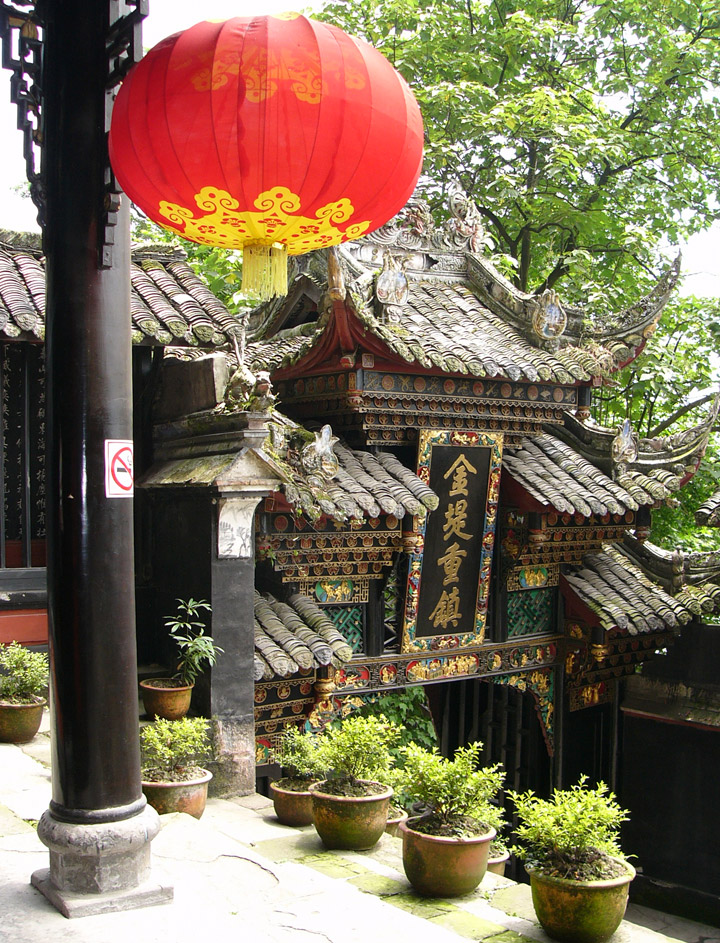
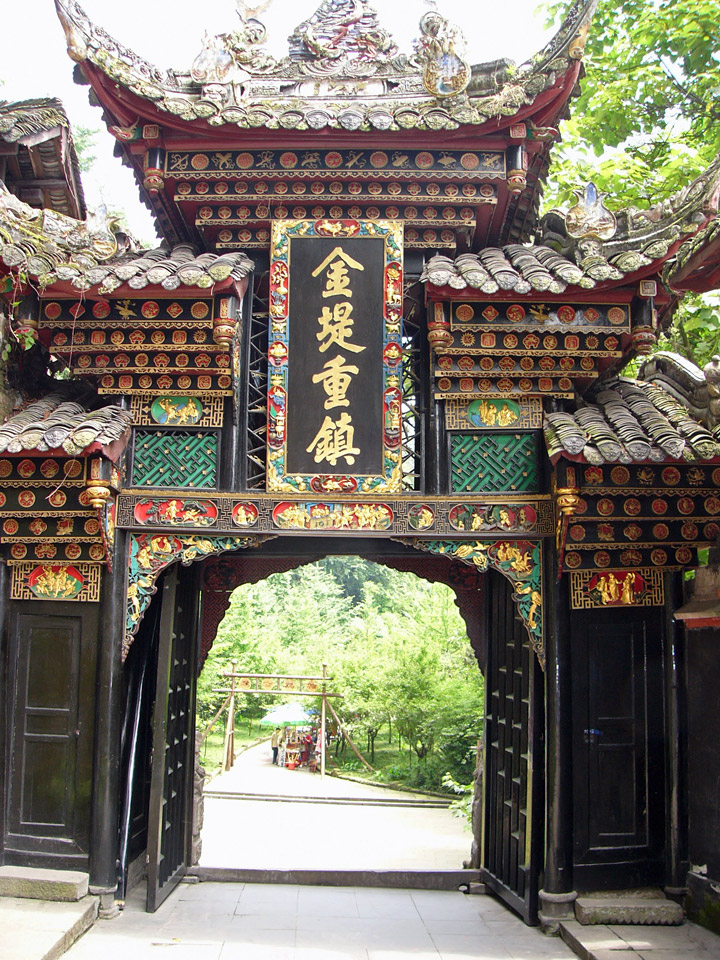
It is spillway for releasing flood and silt from inner river to outer river. When the volume of water in inner river goes beyond the upper limit of influx at Baopingkou, excessive water will flow over Feishayan to outer river. At the same time, the eddy force of overflowing water helps take along the silt and sand, which in other cases would settle to the bottom. In ancient times, with no cement in use, Feishayan spillway was originally made of piles of bamboo cages filled with cobblestones. If there happened unusual big flood, Feishayan could collapse by itself, leaving water channel much clearer. Now it has been constructed in concrete.
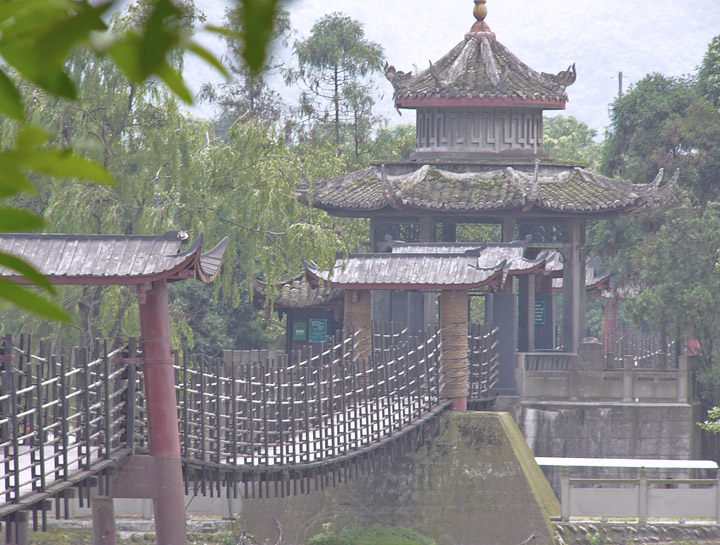
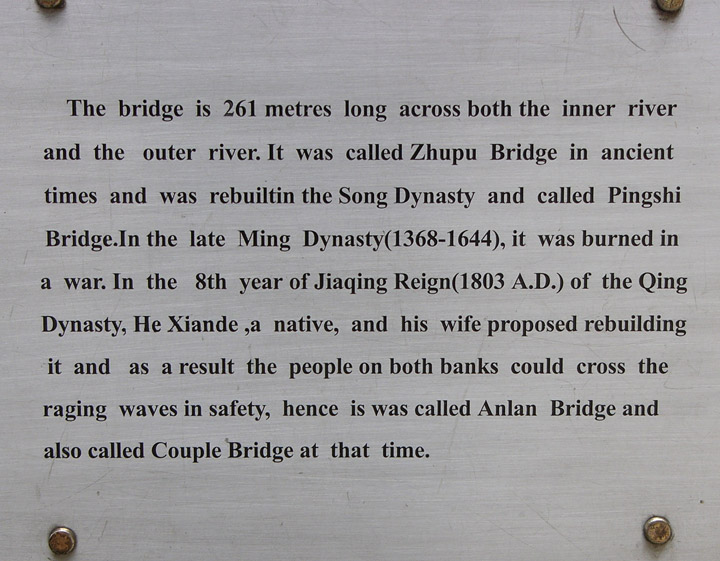
Anlan Suspension Bridge
Anlan Suspension Bridge also called
Couple's Bridge, spans 500 meters (1641 feet) long over both the inner and outer
river, right above Yuzui dyke. It used to be secured by thick bamboo rope.
Although it is reinforced by tight steel wire now, visitors still can have fun
by swinging back and forth on the bridge while walking across.
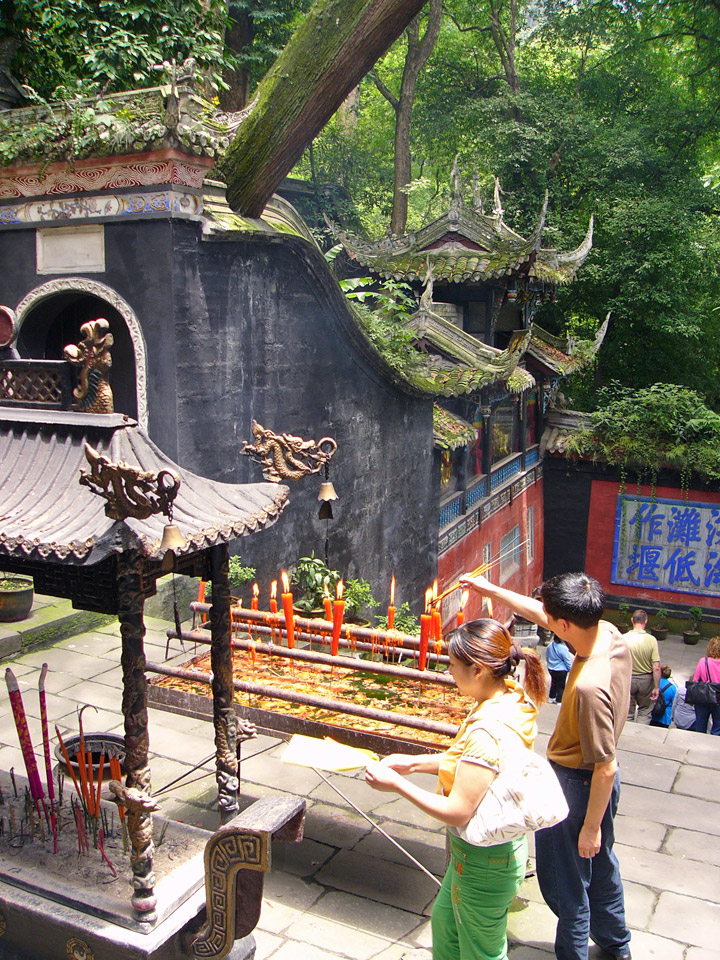
Erwang Temple
The statue of Libing in Libing Hall, Erwang Temple (Two Kings Temple), Dujiangyan Irrigation ProjectThe Erwang Temple was built to commemorate Libing and his son, who together made great contributions to the project.
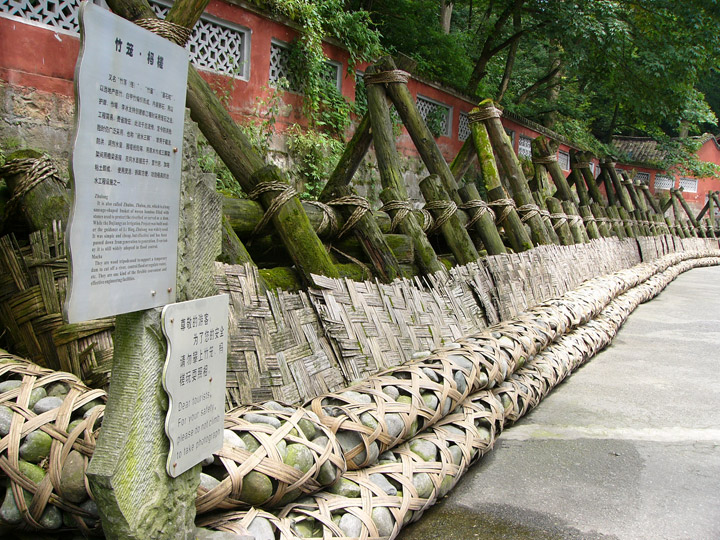
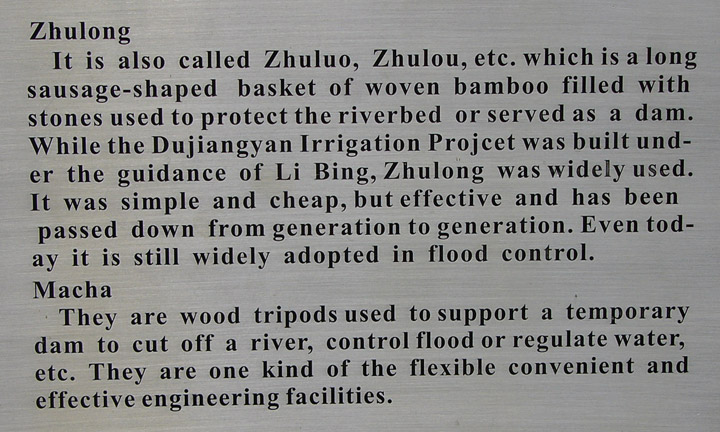
Being an outstanding hydraulics engineer, Libin invented the fish-mouth style
dyke. He also erected a stone man in the middle of river to act as water gauge
for long-time observation of water in different seasons. He buried a stone rhino
on bottom of the inner river as gage for measuring the concentration of silt and
sand when dredging for annual maintenance.
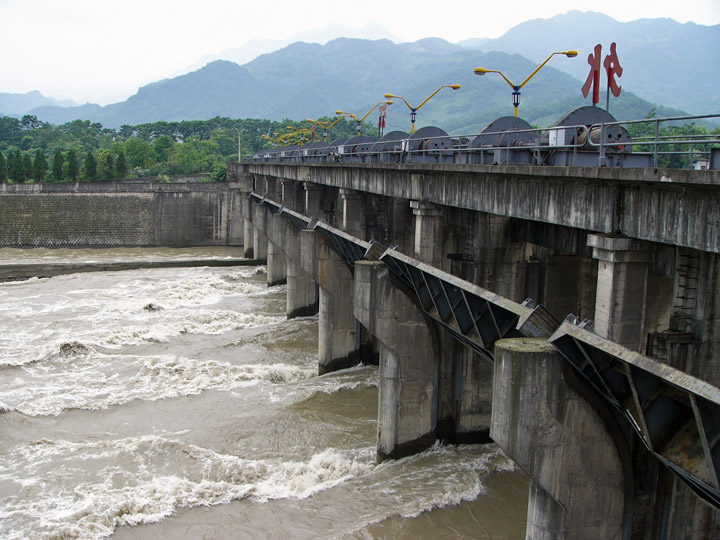
the modern dam
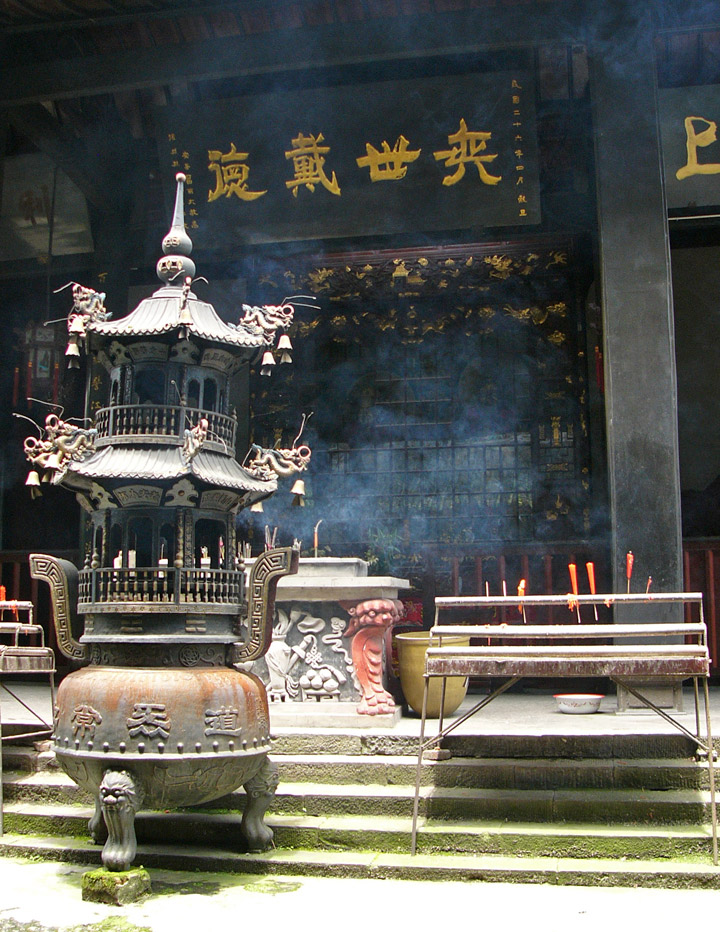
the temple
An eight words inscription on a wall inside the temple sums up his experience of water-control: "Dredging the sand deeper, building the dam lower."
Anlan Suspension Bridge
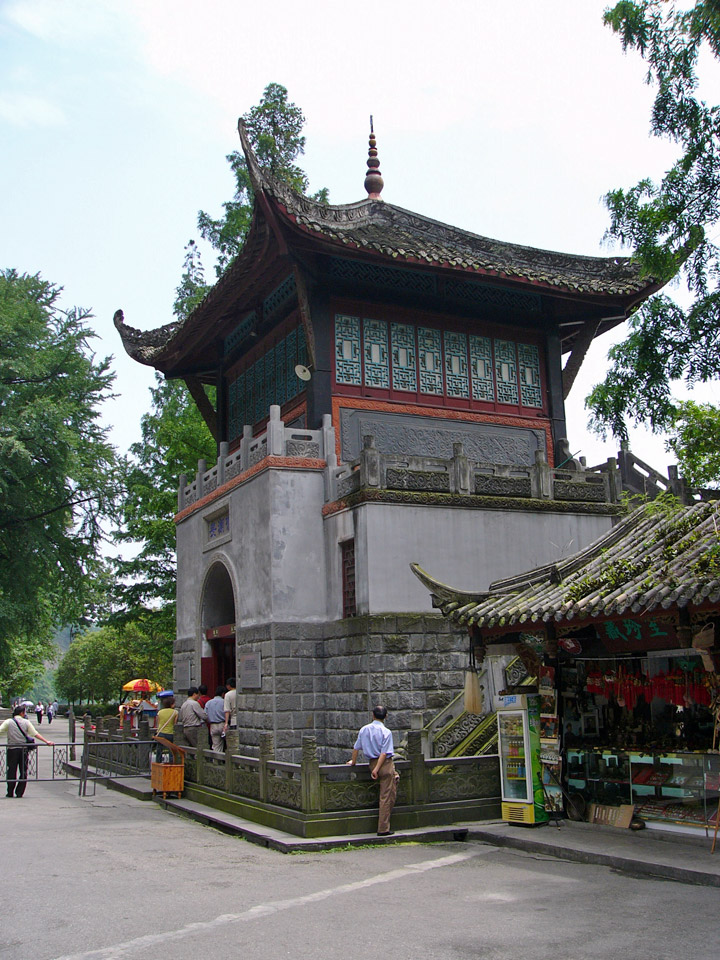
entrance
